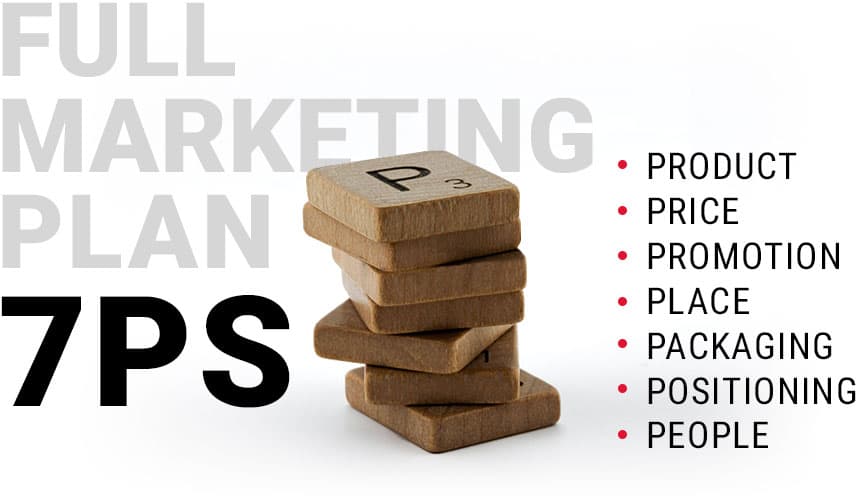With the New Year upon us, it is a very good time to take stock and start planning your work and your budget for the coming 12 months. Having a written marketing plan, which is picked up and used, and updated regularly, is vital if your business is spending money on any marketing activities. Without knowing where you are trying to go you won't know if you've got there!

To help you get started, here's some advice from HubSpot about creating a marketing plan along with some examples and templates.
If you want to start from scratch and do it your own way, the rest of this post will explain how to write a marketing plan and what to include.
A Review Of What You Already Have
It's fairly obvious, but you need to know what you've already done and where you are so that you can decide what to do next. Look at last year's activities and what you achieved. Look at what worked really well, look closely at the things that didn't work well and decide if there is a way of doing them better or if they should be scrapped.
In digital marketing we have the benefit of data. Lots and lots of lovely data. Use every available source, such as Google Search Console, Google Analytics, advertising statistics, social media insights and anything else you can lay your hands on, and dig into it to see what intelligence you can glean. Use that to hone your plans.
SWOT Analysis
You probably know what a SWOT analysis involves; it's a very simple concept, but can be extremely powerful because it involves a really honest look at your business, identifying your internal strengths and weaknesses as well as your external opportunities and threats.
It's important to make it active though, don't just go through the process and think that's it done. Tick. The point is to make sure it informs your future plans. One way to make it effective is by cross-referencing which strengths you can use to take advantage of the opportunities available and to avoid the threats. Then identify which weaknesses you can overcome by taking advantage of opportunities or what you can do to minimise weaknesses and avoid key threats.
This gives you a list of priorities to build into your plan |
|
|---|---|
| Use strengths to benefit from opportunities | Use strengths to avoid threats |
| Minimise weaknesses by grabbing opportunities | Reduce weaknesses & avoid threats |
Marketing Objectives
What are you trying to achieve? Take some time to think about your objectives - where do you want to be in a year's time? You'll need to know your overall business goals so that you make sure that your marketing aims are in line with the overall business plan and you are supporting the growth of the company as a whole.
Marketing teams don't work in a vacuum - they should be an integral part of the business and provide services to all the other teams, whether that's in terms of new product research, pricing advice or internal and external communications. When it comes to setting objectives, be as specific as you can, with objectives like:
- Double turnover in the next 12 months
- Generate 100 leads per week
- Acquire 5 new clients per month
If you add numbers and timescales, it is much easier to figure out if you are achieving your objectives or how far away you are at any point during the year when you review your progress.
Target Markets
Look carefully at your current customers, split them into groups by similar traits - that could be what they buy, how much they spend, how often they buy, where they are located or other categories that are meaningful to your business. Figure out which are the biggest groups and which are the most profitable. Then decide who you want to be your customers - are there any obvious segments which have potential? Remember, you CANNOT target “everybody”!

Break the market down and decide who you are going to focus on. Remember the 80/20 rule which bizarrely seems to work in nearly every situation. The chances are that around 80% of your profits come from 20% of your customers. Analyse that 20% and figure out how to attract more customers like them. The other side of that coin is working out how to discourage the types of customers who are not profitable or even cost you money (you know, the ones that spend very little but are extremely demanding - you are bound to have a few!).
Once you've narrowed them down to three or four segments, create buyer personas for these ideal customers to make it easier to provide the right information to them in the right format. Map out the typical route they take as they make their buying decision - for example they might search for information in Google, read a blog post, do some more research, come back and look at your pricing page and your about us page, read some case studies then call you to discuss what they need.
The more you understand about them, their motivations and their habits, the easier it is to get your messaging right and produce content that will be genuinely relevant and helpful.
Competitor Analysis
If we all operated in a monopoly it would be easy. We could do our thing and be in control of how it was received. However, we don't and so we have to be aware of what other influences our audiences are exposed to, and in particular our competitors' marketing activity.
Before you even start, it's wise to actually define your competitors. They include the companies in your local area that provide the same product and service as you do, but you also need to look at your online competitors - the companies that are ranking above you in the search results that your potential customers are seeing.
These might not be the same businesses that you traditionally keep an eye on but they are vitally important! If you are on page two of google for an important question, and other businesses are on page one, they are much more likely to get the eyeballs of those people you are trying to attract. So look at their websites, figure out what it is that they are doing right and use that to help you create your strategy and your plans.
Also look at your indirect competitors - they may not do the same as you but they may provide a service or product that can be used as an alternative to yours. For example, umbrella sellers are also competing with hat sellers, and accountants are competing with DIY bookkeeping software packages - so think more broadly so that you are well informed about all the possible ways that your audience can be tempted away from you.
Marketing Strategy
This is the explanation of how you are going to achieve your objectives. This is not the place for details, keep that for your action plan, just outline your main methods, such as:
- Introduce a new product or service to get more business from your existing customers
- Target a new market segment or geographical area with your current product range
- Retain more existing customers with improved after-sales service and communication
These are taken from the Ansoff matrix, which is a commonly used method for establishing overall marketing objectives.
Ansoff
|
Existing Products/Services |
New Products/Services |
|---|---|---|
| Existing Markets |
Market Penetration | Product Development |
| New Markets |
Market Development | Diversification |
If your role is more specifically in digital marketing and communications, you might want to focus on some of these digital strategies:
- Improve your website to generate more leads
- Add content on specific topics to your website to help attract more visitors through search
- Increase use of certain social media to reach a new audience
- Use online advertising to get more traffic quickly
Think of it as a roadmap, pointing you in the direction you want to travel.
Marketing Budget
The eternal question: "how much should I spend on marketing?" is very difficult to answer. I'd say spend as much as you can possibly afford as it is an investment in the growth of your company.
There are various rules about spending 20% of revenue or whatever, but they are fairly meaningless as every business is different. They also rely on the "sales causes marketing" model which means that you have to make sales first before you can invest in marketing... (yes, I get that money doesn't grow on trees, but that way is just back to front!)
Taking into account your current objectives, look back at what you have done in the past, see what worked, try to figure out the return on investment, and put more budget into the activities with the highest ROI. If possible look at profit, not revenue, so that you are spending most on the activities that really make a difference. Don't worry about counting likes and clicks unless you can see that they are translating into sales.
My advice is to create your action plan, cost it out and if there's not enough budget to do all of it, prioritise based on your most profitable products, services and customer segments.
Action Plan
What activities are you going to undertake and when? Put dates on this to make sure it actually happens. Add costs too if possible and make somebody responsible for each action. If there's a lot going on, it will make it more manageable if you break it down by month, or by person or by activity type.
Alternatively, split your plan into distinct marketing campaigns based around one persona and one goal. For example, you could have a campaign to target persona A regarding a specific service and put all the activities relating to that together.
If you are creating a full marketing plan you'll address the entire marketing mix in your plan - otherwise known as the 7 ps: product, price, promotion, place, packaging, positioning and people.

However, if your remit is mostly communication (a lot of marketing roles are really comms roles) then you'll just look at the promotion "p". This might cover advertising, PR, social media, websites, SEO, email marketing, exhibitions and more. Your strategy will give you the basis for choosing the most appropriate tactics to help you meet your objectives.
Digital Marketing
As we are a digital marketing agency, we focus on the online aspects of communication, but realistically it's difficult to separate digital from traditional marketing, and it would be quite unusual to see a marketing plan that didn't have a large dose of digital tactics. Online and offline marketing activities should all be coordinated anyway, so it makes more sense to have one plan with sub-sections if needed.
For example, you might want to run a poster campaign but it's likely to have a social media or website address, or QR code on it. Or you might run a Google ad campaign which takes people to a landing page where they can request a free sample of your product. If you create one master plan, your teams or your agencies can work together towards the same goal and the same deadline.
Content Marketing Plan
Once you've written your marketing plan, you are likely to need some detailed individual plans for different teams or types of activity. Content in particular is one of those areas that benefits from a detailed content marketing plan and a content calendar, otherwise it tends to slip after the first burst of enthusiasm.
If you have more than one buyer persona or target audience make sure you are addressing each one at each stage of their journey towards becoming a customer. So you need information which will attract their attention on social media, search engines, advertising, PR etc. Then you need more detailed, educational content to engage them and help them solve the problem they are experiencing. Finally, don't forget to convert them into leads by giving them a good reason to connect with you. When they have decided to become customers you'll want a plan for keeping in touch with them too.
Use our free guide below to help you plan your content effectively.
There are other sections you can add into a marketing plan, but if you use these sections you have made a good start and can kick off your new marketing year in a planned, focused, effective and measurable way.


